The Real Market With Chris Rising – Ep. 24 KC Conway
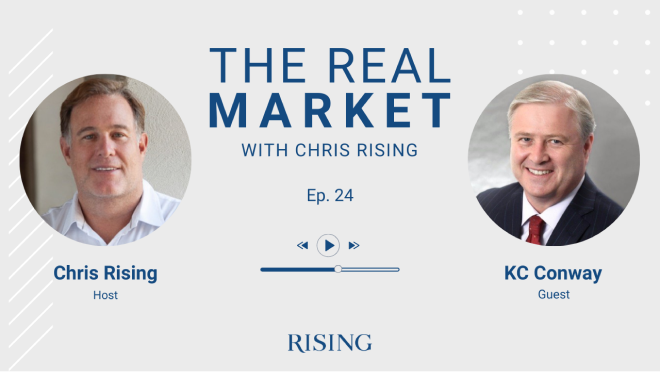
The Real Market With Chris Rising – Ep. 24 KC Conway
Podcast: Play in new window | Download
00:50 CR: Today, I have a great conversation with KC Conway. KC is the chief economist for CCIM Institute and he’s the director of research and corporate engagement at the University of Alabama Center for Real Estate. We’ve spent a lot of time talking about adaptive reuse, a subject that I think a lot of people are very interested in, and his focus on how we make adaptive reuse its own asset class. But we go into a lot of other interesting discussions, and I think you’re really gonna enjoy it. It’s a real in-depth discussion about the role of adaptive reuse in commercial real estate.
01:28 CR: Welcome to The Real Market with Chris Rising. I’m really excited to have the chief economist of the CCIM Institute join us. His name is Kiernan Conway, or otherwise known as KC. KC, welcome to the podcast.
01:42 KC Conway: Thanks, Chris, I’m really looking forward to the chat with you today.
01:45 CR: Well, I’m excited about it because I think a lot of people in our industry are very aware of the CCIM Institute, but what I’ve been really interested in reading and what I’m interested in talking to you about is how CCIM started taking an interest in adaptive reuse. Because that’s certainly a focus for my company, the Rising Realty Partners, but also it’s a focus in a lot of the cities, especially in the Western US, and I know it’s come across the country. So why don’t we start a little bit, tell us a little bit about CCIM, and then we can delve into adaptive reuse.
02:20 KC: Sure, thanks for that. So CCIM Institute is an affiliate of NAR, the National Association of Realtors, they’re essentially the commercial realtor side of the realtor side. And I’m real excited to be affiliated and a part of the CCIM Institute ’cause I think they’re one of the leaders in trying to really develop quality education and deal with some of the more sophisticated issues that we deal with in commercial real estate. So unlike, say, maybe other industry organizations that focus on different things, I think the CCIM deals pretty holistically and broadly with commercial realtor needs and issues, and trading and education.
03:01 CR: That’s terrific. And as the chief economist, tell us a little bit about your background.
03:05 KC: Yeah, so chief economist really means it’s the guy that makes up the numbers, right?
03:12 CR: We have a few economist jokes we tell here.
03:15 KC: You get to forecast and then re-forecast till you get it right. So my career, it didn’t start out as economics, I grew up in Colorado in a developer family, and ended up going to Atlanta for business school at Emory University. And my father, my grandfather, I’m a scarred real estate guy, so I’m a third generation MAI appraiser. So when I got out of business school, dad encouraged me to at least go into the evaluation side, to learn how to value something if you’re gonna play with it. So I learned how to figure out what influences value in real estate, but I learned rather quickly that the highest and best use of an appraisal after you write one is for criticism. Nobody believes the number, right?
04:00 KC: So I wanted to learn more about the transaction and finance side, so I’ve spent a good part of my career really on the finance transaction side, and then when I ended up at the Federal Reserve in 2005, after a bank merger, I was with a legacy SouthTrust Bank headquartered in Birmingham, I ended up at the Federal Reserve and got drawn into the economic side of it, and at kind of the last I’d say 10, 15 years of my career, spent more time on economic analysis for real estate. But started in Colorado, came to Atlanta, and currently do a dual role with the CCIM Institute as their chief economist, and then the director of research in corporate engagement for the University of Alabama’s Real Estate Center.
04:41 KC: And then I also serve on the Board of Directors for a public REIT, Monmouth. M-O-N-M-O-U-T-H. They’re up out of New Jersey. They primarily invest in logistics and industrial real estate, and are kind of a landlord for a little company known as FedEx, they do a lot of the buildings that FedEx occupies around the country, I think about 10% or 15% of their space. So that’s what keeps me out of mischief these days.
05:06 CR: Well, I bet we could have a whole discussion on where logistics is today, but I want us to focus on adaptive reuse, because I’ve had the privilege of reading through a report that you put together at CCIM and University of Alabama put together on adaptive reuse. It’s something that we take very seriously. Our focus as a company is very much using impact as alpha and converting buildings. The commercial office buildings produce about 30% of the carbon in the world today, but they also provide an amazing background with their history, and I think they also provide a laboratory for how we can create great places. And so it was really interesting to read this report, it was published for the third quarter of ’18, but why don’t you tell us a little bit about your interest in adaptive reuse? And I think one of the common issues people have is, “How do we talk about it in the same language?” So maybe you can give us some definition so that we’re all speaking the same language.
06:07 KC: Sure. So I kinda got my first taste in adaptive reuse when I was with a legacy bank, SunTrust Bank, headquartered here in Atlanta, where we started to try to do some of these projects and larger challenging ones, and found out the regulators didn’t understand them, and the credit approving process and the banks didn’t understand it. It’s kinda like pornography, you know it when you see it, but you can’t really define it and underwrite it upfront. So anyway, we set out to basically take a look at really how deep is adaptive reuse, what are the challenges, and when we started out, we found there really wasn’t even a fundamental definition of what adaptive reuse was.
06:50 KC: And then we learned further that none of the major data sources out there track it, segregate it, so you could do any kind of analysis or underwriting on it. And then when I talked to the rating agencies and the bank regulators, they didn’t understand it and they didn’t know where to classify it or what kinda capital rules to put against it, and should you do a 50% loan to value or a 2% loan to value because of its risk? So we saw the trend continuing in adaptive reuse driven by, I think first, a millennial workforce, it’s getting deeper into our employment numbers and workforce, they’re now into their 30s. And they don’t wanna live in the suburbs, they wanna do the opposite of mom and dad. Kinda what every generation does, they do the opposite of mom and dad. So they’re coming into the cities, they want more active lifestyles, their jobs and everything are gonna be in the city, so we think that’s one big part of what’s behind adaptive reuse.
07:51 KC: The second is most cities, as we learn from the Amazon HQ2 decision, have severe housing affordability issues. And so I think adaptive reuse is an ideal potential solution for some of the housing affordability issues, in providing housing in the urban areas, because we… Unlike the suburbs, you can’t just go out find another cornfield or agricultural field to carve up. There are no big swaths of land to redevelop. And then we also know that with what’s happening with the e-commerce economy, kind of the click it and ship it, it’s making more and more retail department stores, big-box obsolete. We think that’ll extend into even auto dealerships that need to be repurposed. So what do cities do with all of this empty commercial real estate that’s resulting in how we really shift to an e-commerce economy? How do you put it back to productive use, get it back on the tax rolls and producing some revenue? And then how can it solve issues like affordable housing?
08:55 KC: So our initial attraction to it was, we saw a lot of opportunity there, we identified and believed in this trend that we are gonna see more population and demographic migration to the inner cities, less so than the migration out to the suburbs. And we think the problem or opportunity for adaptive reuse is only gonna grow as we have more commercial real estate, whether it’s shopping centers, or malls, or dead motels, or older industrial warehouses that aren’t located near intermodal or the logistics infrastructure. What do we do with it? What can we do with it? And the final piece that we noted in this research was, when we looked around the country and we talked to developers, their single biggest challenge, aside from raising the money, was that local governments and city leaders don’t understand it and the legacy zoning and building ordinances don’t incorporate it.
09:55 KC: And so the developers run into huge obstacles in terms of how they get one of these redone because these are existing structures, they may not have the same parking, life safety, or density requirements in new construction. And so most planning and zoning officials have not taken a course or had any curriculum in their career on adaptive reuse. So we view this as an opportunity to showcase a broad spectrum of what you can do, and to help them with their imagination process, so maybe they can be a little more receptive to it.
10:32 CR: That was a wonderful walkthrough of what is adaptive reuse. It’s kind of an onion, so let’s unpeel it a little. Here in the City of Los Angeles, we were… The City of Los Angeles is one of the first to do an adaptive reuse ordinance that allowed historic buildings along Broadway and Main Street, the real core of the city, Spring Street. And what that adaptive reuse ordinance did was basically change building codes, not that anything was any less safe, but it was trying to recognize the fact that if you convert a historic 12-storey building from a dilapidated office into residential, the codes for the modern ground-up development didn’t quite fit. And that was a real catalyst up through 2008.
11:17 CR: And then we had the downturn, and then after 2008, for converting these historic buildings into lofts, into apartments that then kicked off a new construction boom here in Los Angeles. Outside of just trying to adapt the code to… The building code to a historic building, what other things do cities need to do in order to encourage developers and communities to reclaim these old building?
11:48 KC: Yeah, so I think the first thing is your exact starting point, they’ve gotta have in their zoning ordinances something that deals with adaptive reuse. Because many of them, you’re dealing with existing structures and densities on land that are not gonna be able to accommodate just the basic parking that a modern zoning ordinance would require for a new office building or something in the suburbs. So I think the starting point is to identify that this is something different, and if you wanna put back to productive uses and you want capital and other users to come to it, you’ve gotta open your mind a little bit to what are the hurdles involved with that. So that’s one. The second one is they need to inventory it because they’d be shocked. When we work with cities around the country to have them inventory the population set of vacant commercial buildings that are not productive, they’re not contributing what they could in tax, property tax revenue, or sales tax, or occupancy tax revenue, the inventory is pretty substantial.
12:51 KC: And I think where this will really tie in, and it’s an important thing to tie into, is really with these opportunity zones that were a critical part of the 2017 Tax Act, that when we get the final IRS and treasury rules by the end of the year, I think opportunity zones are gonna be the fuse that really ignites a lot of adaptive reuse. Because these zones, for the most part, ring areas like your downtown LA area and have the population of buildings that are sitting underutilized or empty, that could be put to productive use. So I think the first thing is to look at your zoning ordinance and recognize that if you want to see alternative uses in buildings that are empty, you gotta begin to think about what is needed versus new construction, and things like parking, density, how you deal with life safety items, things like Americans with Disabilities Act, a lot of buildings, the older buildings use most of the site.
13:52 KC: So if you wanna add an elevator, you’re pretty much gonna have to do it on the skeleton of the building, but that may violate the setback ordinance. So how do you accommodate that so that you can deal with Americans with disabilities or modern conveniences, but address the setback that really doesn’t create any more of a life safety or other type issue? And then I think the other thing is to realize the inventory of assets, and I think most cities would be shocked, how many assets they have and they’re growing each year with more retail bankruptcies, and closings, and dead malls, and older warehouses made obsolete by e-commerce warehouses that are moved out somewhere else for closer to intermodal. There’s a large population set that’s growing, and if you want to deal with the revenue impact in your cities, you gotta begin to identify these, and I think you’ll find most of them are… These assets are in opportunity zones.
14:49 CR: Well, there are a couple interesting things here, and I do wanna dive a little deeper into opportunity zones, but before we get there, I think one of the issues with the adaptive reuse definition is, so many people think that it only applies to historic buildings. So our project, PacMutual here in Downtown Los Angeles, which by the way, SunTrust was our lender the second time when we recapitalized it with UC regents, but that was a building that was built in 1906. It’s three buildings put together, it was built in 1908, it was built by the Pacific Mutual Life Insurance Company because they lost their building in San Francisco in the 1906 earthquake, so they wanted to build a building where there wouldn’t be earthquakes, so they went to Los Angeles, little did they know.
15:31 CR: But that building then, they built in 1922, a 12-storey, the largest import of marble in the history of the United States up to that time, and then they built the first parking garage, underground parking garage in Los Angeles, and when we bought it, it was just a very dilapidated… It had occupancy, but 40%, 50%, and we tried very hard to turn it into a 21st century building, and I think we were successful at it. But my point is, a lot of people look at that or they look at the Grey Advertising building in the Flatiron district in New York, and they go, “Oh, I get it. Historic building, dilapidated, somebody brought it back to life, and then now it’s a cool place to be.”
16:09 CR: But where I see adaptive reuse really evolving, I think that’s always gonna be a portion of what we do, but I think you were starting in on, “What about these old strip malls? What about things built… ” I often say that things built in the ’70s, that these are right now in our building codes, they’re almost impossible to upgrade, and we gotta change those. And there should be new uses. I look at a lot of the manufacturing in some of the poor areas where these opportunities are gonna be, could be great new things. They could be digital arcades, there could be a mix of housing. But I think defining what we mean by adaptive reuse is so important. And you were hitting on it, but I don’t know if you were… I think if we can… I was hoping we could get really to a definition of what qualifies, how do you define adaptive reuse?
16:54 KC: Yeah, that’s where we started in our paper, and then we kind of identified four key elements that you gotta check the box on. Regulators love to have boxes to check. And bankers, right, for they’re underwriting. So the first one is, you’re obviously dealing with an existing structure, but dealing with an existing structure doesn’t preclude a project that maybe you’re demolishing… Raising or demolishing part of it or adding on to it. So you’re at least starting with and dealing with something of an existing structure, but it doesn’t preclude if you’re doing an added construction or demolishing part of it. The second thing is these assets typically have substantial functional or economic obsolescence. So functional is kind of design elements, you wouldn’t build it that way today. And economic is maybe something that’s affected it from outside the property, an industry that’s moved away or textile industry leaving the United States and affecting textile mills or something like that. So they have functional and economic obsolescence, so you’re gonna have to deal with various design issues and how you make it appeal to a modern use for work environment.
18:05 KC: The the third thing, this was our big one, change of use. So most of this adaptive reuse we think that qualifies is you’re actually changing the use, you’re taking an old factory, maybe converting it to loft apartments. You’re doing like, what you’ve done, you may take a large structure building and convert it to multi-use. It might have a hotel element, it might have retail, it might also have a office. There are others out there, Deloitte made a good attempt at trying to bring some attention to adaptive reuse, but they defined it as any renovation of a building. Well, that’s kinda ridiculous. That includes 95% of all commercial activity. We really wanted to focus on those that have the change of use.
18:45 KC: And then the fourth one is they gotta have economic viability. And economic viability doesn’t mean that because you’re using a tax credit or something, that it doesn’t mean it’s viable. It just means when you put all the pieces together, it makes sense to do it. In the old days, in appraisal, we used to teach highest and best use a good way, we’d end up doing a land residual technique, but the four elements, where it’s gotta be physically possible, so you have a big enough site or building. Is it legally permissible? Here’s where all the zoning issues come in with. It has to be economically feasible, so at least, can I make some money if I do this? And the last one is, what’s maximally productive? And you may have two or three uses that could go into a building, but which one’s gonna give you the best return, the most return?
19:28 KC: So is it more finding adaptive reuse, sometimes it’s not just one use, it’s a couple that give you the maximum productivity or the highest yield in it. So those are the four key elements, the change of use is the big one in our paper that nobody else had really tackled. And when we put that in there, what we next set out to do is really quantify. Is this eclectic, is this a real trend? And what we found out is, if you look at all commercial real estate activity out there, about 1% to 2% of it today involves adaptive reuse projects. And we think that potential can double every three to five years with what’s coming at us and looking at the trends of moving more urban, how do we use empty or underutilized buildings back to productive use?
20:14 KC: So those are the four elements, and we think the number, while small today, can grow exponentially as people understand that they have definitions, they have data around it, so they can underwrite it. That’s the big challenge on the finance side is nobody knows how to underwrite it, they don’t know what the metrics are. So the solution to that is what, Chris? They just reach into your bank account and take a lot of equity out, right? They give you a 1% loan to value on that deal, right?
20:38 CR: Yeah, that’s right. Well, as we talk, as we dig a little deeper into this, so a lot of our listeners are saying, “Okay, KC and Chris, you guys like adaptive reuse, that’s all fine, but why does it matter that we have a definition in a new market segment that is say different than your traditional office or your traditional industrial?” What in your thinking at CCIM, and as you’re thinking about this, why is it important to have an asset class within real estate called adaptive reuse?
21:12 KC: Yeah, and a really good question. So if you think about it, if you ask most people out there what are the commercial real estate property types, they’ll get most of them, right? There’s apartments, there’s retail, there’s office, there’s industrial. They might remember hotel, right? And they kinda stop there. And if you think about it, capital follows that core food group. So if we don’t have a food group category for adaptive reuse and it’s kind of a hybrid, nobody knows how it works. Can it be included? And so I’ll use two good examples. So for banks, when they look at adaptive reuse deal, the first thing they have to ask is, “Is this a construction loan that requires a certain classification in underwriting to meet the bank regulatory requirements and certain capital requirements that are more onerous on a construction loan? Or is this more considered a renovation that could be a C&I, commercial and industrial type of investment loan that might be eligible for Community Reinvestment Act credit?” So the definition really matters, so that we can get the product defined in the different capital sources, so that they can extend capital to it.
22:21 KC: Another one is in securitization. So once these projects are done, when you’re all done and successfully converted one, you kinda like to get your money back. So you can either sell it or you can get permanent financing on there. And the securitization market, the rating agencies don’t understand where they put and how they underwrite an adaptive reuse project to put it in a securitization. They go, “Is it an apartment deal? Is it a warehouse deal, a loft warehouse deal? Really apartments are still warehouse. What’s the supportable debt service coverage that I should look at? Do adaptive reuse projects rent for less or more, or equal to new construction? Do they trade at the same cap rate, kinda the inverse of the stock multiple? How do we convert the revenue into a value?”
23:07 KC: So that’s why it matters, is we will never get the capital to the table if we don’t have a separate definition, and then we don’t also help develop the metrics to help them underwrite these deals. So if we want capital… Capital drives everything, if we want capital to come to it, we really need to have it as a separate food group, just like we think of apartments or office or retail or industrial or hotel as a commercial top property type.
23:33 CR: So would you then say that adaptive reuse will have multiple uses in it? So a lot of people talk about creative office today in the context of adaptive reuse, but under your definition, it really doesn’t matter if that’s a hotel within the adaptive reuse, or office, or lofts, it’s the idea that the skill set, the zoning and all of that, as it relates to adaptive reuse, makes it all its own class?
24:00 KC: Exactly right, because if we don’t do that, what tends to happen is, so we know hotels generally get a more punitive treatment for debt service coverage and cap rates, ’cause they’re more of a business. What’ll happen is, the use element that’s in that adaptive reuse project will be what the capital sources defer to as the most onerous treatment to be safe. So we find, in fact, that adaptive reuse projects with multiple uses, where you mix things, they actually perform better. They have higher internal rates of return, they have higher occupancy, they have less tenant turnover, and the trick then becomes, how do you allocate things like common area expenses?
24:43 KC: So if you have an apartment deal as part of a hotel and an office project, the hotel and the office folks, those tenants can absorb more of the common area expense than say an apartment folk. So how do you allocate those? And we really don’t wanna get into the weeds of underwriting three different things and pro rata averaging them, and then finding that it funds as well. I don’t like hotels. And so it’s got a hotel element, so I exclude the project. When maybe the hotels may be a small part of it, so I think we need a separate category so that we don’t end up detracting from the overall adaptive reuse. ‘Cause many… Especially the larger projects, if it’s an old Sears distribution building, or if it’s a large office building, or a project like you got there in LA, these things are gonna probably require multiple uses today. You’re not… I don’t think you’re gonna be able to fully deploy just one use in them.
25:35 CR: What’s interesting is, you’re talking through this and we’re talking about the importance of it having its own asset class. It makes me… I think we’ve been in the business a similar amount of time, it makes me think back to when real estate wasn’t even an asset class generally and it wasn’t considered an alternative, it was just not really ever considered. Maybe talk a little bit… I think it’d be interesting for everybody to talk a little bit about your career leading up to this, and one of the things when we were exchanging some information before this, it popped out to me as you mentioned the HP 12C calculator, which how it changed the business.
26:10 CR: Which it did, and if you read Sam Zell’s new book, “Am I Being Subtle?” he talks about how that was such a game changer, the HP 12C, because now any smart person could run cash flows, future cash flows. But anyway, talk about the history of and the importance of this asset class distinction, how real state evolved so where this becomes a fight worth fighting for, making adaptive reuse its own asset class?
26:41 KC: Yeah, no, another great question. So I’ll piggyback on one item there. When you talk about the technology and all changes and how real estate has really evolved. If you think from the 1950s and ’60s, really, it was an alternative asset. It wasn’t structured as part of… We didn’t have really restructures until the ’70s. We didn’t have securitization until the ’80s and ’90s, so a lot of the capital structures and funds and vehicles that we use today didn’t exist back then, and real estate was kind of an alternative asset. Today, it’s a mainstream asset that’s embedded in almost every fund, every mutual fund, every SPDR fund. If you invest in a company, there’s a lot of real estate involved with it, so I think you’re exactly right in picking up that point that because real estates evolved from an alternative asset to a mainstream asset, if we want adaptive reuse projects to fit into that, we’ve got to help it out in terms of defining it and quantifying it.
27:40 KC: So to help you on that, ironically, next week in the CCIM Institute and myself with the Alabama Center for Real Estate are releasing a paper called Commercial Real Estate Finance Disruption. Is history about ready to repeat itself? And one of the things we looked at was we went back to the 1950s and looked at all of the kinda major trends and evolution in technology and whatnot that has enabled commercial real estate to evolve, and you’re exactly right, those that have gray hair or wrinkles or battle scars in our bank accounts, go back and we can remember VisiCalc and then the HP 12C.
28:19 KC: And VisiCalc was really the first spreadsheet analysis, but when you think of how far we’ve come from those to Argus cash flows and everything today, what those technologies and tools enabled us to do was structure more complex leases and cash flows into commercial real estate, so that more capital could come into it. A life company could measure it’s internal rate of return, securitization could underwrite it and structure it into a bond, because it had the technology in detail to analyze the cash flow and expenses. So these evolutions in technology have been huge and can you imagine trying to do an adaptive reuse deal today if all you had was an HP 12C?
28:57 KC: The cash flows, the structures, I have some of my father and grandfather’s original appraisals from the 1950s and they got Polaroid pictures and the cash flows are fold-out pieces of paper that were hand-typed with index cards as the footnotes rather than embedded in the cell. And it might have taken weeks or months to do that analysis, and using Elwood math and everything that they calculate it. Now we do that stuff in seconds and we also have the market data to do it. So the evolution of technology is a huge part and I think adaptive reuse will be a big beneficiary to that because we can almost use an unlimited imagination in an empty building to say, “You know what? I could do three, four, five things here.” And the other thing is about adaptive reuse, everybody tends to think it involves only large buildings or projects where, in our paper, one of our goals was to lay out how scalable it is. So we even had a little project that was an empty, closed branch bank in a small Alabama town that got converted to a town library and very successful.
30:02 KC: So what are we gonna do with all these smaller buildings, branch banks or retail stores, etcetera? So it is very scalable. It doesn’t involve just large projects. And the other thing that really to compliment you guys in Southern California and LA, is some of the western cities like LA and Denver have been really bigger pioneers in adaptive reuse than northeastern cities like New York or Boston or Philadelphia. And you guys have probably one the most famous ones we highlighted in our paper, which was, think about green space and what you can do because the more you can add back into the urban area, the more it fuels as adaptive reuse as an attractive property. So you guys have the Historic Park, the old… When Governor Gray Davis signed the bill that took the 34 acres, it was a former railyards there in Los Angeles to create the state historic park that became a huge green space, and think of what that did in terms of the attractiveness of assets around there.
30:58 KC: And so you guys are really at the front end of it. Denver did some of the same things. So I try to remind people, we didn’t do… Yeah, we didn’t… We really didn’t think about it at the time, but when I talk about it around the country, it’s really the western markets. Tucson, Arizona has kind of been one of those pioneers out there in terms of adaptive rezoning ordinances that are simple and clean and having a real success. LA and Denver have probably done more in projects going back decades before it even was cool to be adaptive reuse. So I give more credit really to the western markets and folks like yourselves in LA.
31:34 CR: Well, one of the things that’s important, I think, people understand about adaptive reuse as well is if you have any concern about climate change or any concern about carbon, the worst project for the environment is the last one just built, because if you think about how the steel had to get to that site coming across the ocean on cargo ships, and if you think about the trucks that it took to get there, even if the building ends up being the Apple spaceship where it’s net zero and everything, constructing it causes damage. And if you look at what it costs to do adaptive reuse and what the impact is on the environment, it’s much less. I also think, and I think this is where I wanna kinda head back into opportunity zones, one thing that adaptive reuse most certainly does is it brings jobs and it brings people back into communities and it does create opportunities.
32:33 CR: Where do you see… What I’ve seen is the overlay of the opportunity zone as a little bit like I’ve seen California do their view of what buildings are seismically unsafe. It’s more of a history course as opposed to really diving in and working with cities and saying, “Where are things?” I’ll give you an example, the Arts District here in Los Angeles. Prices in the Arts District exceed prices in the Financial District, but that’s now on an opportunity zone because, historically, that’s where manufacturing was. So what’s your take on how opportunity zones are gonna be defined and how are they gonna… How is it gonna intertwine with adaptive reuse?
33:11 KC: Yeah, another good question. So the first thing, the good news is, in the Tax Act, one of their key charges was to not make this a bureaucratic nightmare. So the first thing that they did was all the states and their governors had to get together and define and actually outline what their opportunity zones were going to be. So you can go to your state and you can see a map of the opportunity zones, the census tract maps and where they are and how they lay out. So the good news is we’re not gonna be in a cluster where everybody’s trying to figure out who gets included or not included, that’s already been done. And the mandate was that in each state, 25% of the low-income communities had to be included in an opportunity zone. So it really was designed to try to target capital going towards areas that maybe hadn’t seen the economic benefits that were urban in nature, where we really need to do some work in our cities.
34:14 KC: So you’re right that we bring jobs, we bring economic activity back into areas that haven’t benefited from it. So the opportunity zones do that. They’ve already defined the areas there. You can go to your state, you can look at a map of those. Some states have taken it a step further. I was a week or so ago in Louisiana at their industrial development economic forum, and Louisiana had gone so far that within each opportunity zone, each census tract, they had actually overlaid actual buildings and assets that are sitting empty that would be targets for adaptive reuse within an opportunity zone. So if they had a former auto plant or a warehouse or manufacturing plant or empty retail, they actually have pinpointed and identified those assets, so not only can you see the defined census tract zones, but you can actually find assets that are available within there.
35:09 KC: So I’m kind of encouraging states to follow more of that. There’s a few that have done that. I don’t know if you guys have done that completely in California, but I’d say probably about 10% of the states have gone to that step level. And then, I think, the third thing that’s gonna happen here is when you look at the trends towards site selection and relocation of companies, more small and medium-sized businesses are being created. They represent almost half of our economy. Most of them don’t wanna go into kind of a new antiseptic new construction in the suburbs, or whatnot. They kind of want something different. They want it in the… They want it unique. They want it in an urban setting. They know that more of their workforce are under 40, actually under 35, so to attract the millennial workforce, and so small and medium-sized businesses are looking for really good adaptive reuse projects.
36:03 KC: And if you look at surveys that are done by millennials and where they wanna kinda live, work and play, they wanna be in the city and they prefer to be in an older, unique type asset that’s been retrofitted. Part of their whole psyche having grown up is to minimize the impact on environment. So you’re exactly right that the carbon impact from putting one of these projects back to productive use is a lot less on the carbon impact, and the other thing that we’ve initially found is that if you look at adaptive reuse projects that don’t have a big environmental problem. They might have [36:37] ____ asbestos toxicity… The debate on asbestos is not as big a deal as it was 10 or 20 years ago. But as long as they don’t have a big environmental problem. The turnkey cost from the time you acquire, go through zoning, go through all the retrofit and lease and stabilize it up, we’re finding is about 15% to 20% less than new construction.
36:57 KC: So there is a real compelling economic argument for adaptive reuse that we’re finding. Our next phase of this research that we’re doing is to re-publish in the spring of next year and we’re collecting case study examples, hundreds of them all across the country, where we’re going through from date of acquisition to date of stabilization, and then whatever you do, permit, loan, or sell it, what was the internal rate of return, what was the cap rate, what are the expense ratios, what were the cost compared to if you had gone to new construction? And we feel when we provide that data next spring, that will kind of be that last piece that capital sources are looking for to really go forward with underwriting these.
37:37 KC: I met with rating agencies, life companies, banks, bank regulators, and all of them said, “Boy, if you can bring those metrics to the table, we’re ready to go. We’ll open up the door full bore to adaptive reuse as a separate category.”
37:51 CR: Well, we’re happy to share information, so we can do that offline, but we keep a lot of that data. So let me ask you this ’cause it wouldn’t be my podcast if I didn’t get a little bit into your use of technology, you’re based out of Atlanta. You spend a lot of time in Tuscaloosa. Yeah, I assume, you also get to Chicago, but how do you make your everyday life work? Are you more millennial in nature that you’re fully mobile or are you leaning towards the baby boomer where you’re still printing out your emails?
38:21 KC: No, I finally got to the point where I go through the airport 80 to 100 times a year, and I actually use my smartphone to go through TSA, and I don’t print the ticket out anymore.
38:30 CR: Terrific.
38:31 KC: My millennial daughters are very proud of me, that I’m letting paper go. But technology is a huge empowering thing. When you can have all of your data in the cloud, where you can use things like Google Sheets, where everybody can real-time be working on a spreadsheet or a document instead of having to email it back and forth, everybody wondering who has which document. So yeah, I’m 56, so I’m having to… Like most baby boomers, make sure every day, probably technology and learning the new thing is always a challenge, but if you don’t do it, you’re outdated really, really quickly, probably like our hard brick-and-mortar retailers are. So I don’t know how I could function without the mobility, without the cloud, without tools like Google Sheets, all of that type stuff. And then when you look at cash flow analytics, where you can… Basically, it’s unlimited what you can model or structure, the imagination is the only limitation to what we can do in a project today, which we couldn’t do that even 10 or 20 years ago.
39:35 KC: When I was in my days at Equitable Real Estate and Prudential, the amount of time, days and weeks we spent trying to develop a cash flow and model that was going on in the leases and then try to roll those up into a portfolio was just… It was a torturous task. And today, it’s something you do in minutes or an hour or so. So it’s had a huge impact, and I think the other thing that it does is, that doesn’t just flow through to us on the real estate side, whether we’re brokers, or developers or the finance people, but it spills over into the engineers and the architects. That everything that we wanna do, change a design plan or change the mix, or whatever, all of that can be done very easily in the engineering and architecture as well because of technology. So I think we’re great beneficiaries of it and it brings a lot of efficiencies and hopefully some of the cost mitigation into play.
40:23 CR: Well, you know what’s interesting, and sometimes I get accused of stretching a little bit when I make this analogy, but the world that we grew up in and started working in, a world pre-email where… When I… My first year as a lawyer, one of my big jobs was to stay on Friday night to make sure that the actual written red line with the actual cut and paste was put into the FedEx by 10 o’clock so it could be at the lawyer’s house the next day at 10:00. So he, who was always a he, could get it back, so we wouldn’t waste a weekend. And that is now today called email and cut and paste and you hit a button.
40:58 CR: But when you think about what we’re doing today, and how efficient we are, and I think this is what’s blowing away people, is the… How we get jobs done so efficiently. So we lack a little bit of that, “Well hey, I put in eight hours. I got half of what you would get done today, but I put in eight hours in at work.” And to me, here’s where the stretch may be, but I think what is appealing about the cities and appealing about adaptive reuse projects for people, is you’re not trying to house them into a small office all day to get that manual labor, mental labor work done. What you’re trying to do is give them periods of time to be most effective, but then also have these other stimuli, and other collisions for creativity.
41:41 CR: It’s a totally different workplace than what an office building was in the 1970s, or what an apartment meant in the 1970s. You don’t have huge libraries anymore. I remember being in college and having… The hardest thing to move was my video collection from all the movies I owned and now that’s all in the cloud. But when you start to break it down, you go, “What’s the experience people want?” I think what they want is that sense of history with the modern, and it just… To me, it says that’s where adaptive reuse is so important. And it really shouldn’t be surprising to us that a generation that grew up on Friends living in New York City, watching Friends every day and seeing a New York City environment, their desires are gonna be a lot different than those who grew up watching Opie and that experience.
42:27 CR: And so to me, it makes sense. It’s been a hard push. I’ll tell you, when we talked about first doing adaptive reuse, it was really… We were guided strongly against it, that buying a new tower, and we owned some towers, was really what you wanted to do, and I just fundamentally disagreed. So that’s me on my soapbox a little bit, but before we’re done, and so you’ve really become a leader in doing this, pushing for this adaptive reuse, what kinda demands has that been on you and how do you take those 100 days of travel and still be a good father and still be able to get basic work done on a day-to-day basis? How do you handle it all?
43:07 KC: Yeah, it’s always a juggle. The good news, at one time in my career, I was the US Chief Economist for Colliers, and unfortunately that travel involved a lot of cross-country and international travel, so you had a red-eye, 10, 12 hours coming back. So most of my travel today is pretty much East Coast, to the Rocky Mountains, ’cause it’s not a bad travel unless it’s a bad weather day in Atlanta. So Atlanta’s my probably most challenging airport to go in and out of, so when I land in a nice, small secondary market airport… I was recently in San Antonio and Colorado Springs and I’m like, “Can it really be this easy to go through an airport?” So it is a juggle. You have to… You do things like, I might take a late night flight so I’m home for dinner and get to update on school activities, and I may be home by dinner the next night, so you do a later night flight.
44:02 KC: The other thing is we’re doing some other things, like we’re doing more podcasts and webinars, so you maybe necessarily don’t have to fly and do it in person. You can still deliver the content and the information in an electronic format, so we’re doing more with that. The university has supported me and is doing a lot on that side. The universities are doing a great job on it. But you kinda got to prioritize it and look at that calendar and make sure that whatever kid’s event is coming up, you didn’t suddenly agree to book something there. But your original point back there on how… The promise that adaptive reuse holds, I think it’s huge for kind of the workforce and families because think of the time savings that they get back in not having long commutes, not having a lot of capital tied up in a dining room set and china because they don’t need that anymore. They eat and do stuff in the community.
44:58 KC: Think of how much more engaged families can be in activities and schools if they’re not long distances from work and home. So I think adaptive reuse, it also connects into public transit. So for the middle class and the lower class, one of the projects we’re most excited about is looking at motels, old roadside motels, that make great affordable housing conversions. And a lot of these are located around our major airports, and they’re on transit routes, and they can be very easily adaptively reused to affordable housing. So I think many of our big city problems, the solutions lie in adaptive reuse. We’re seeing assets go dark and not have tax revenue. Adaptive reuse enables us to put those back to use. We have affordable housing challenges; adaptive reuse is the promised solution without a lot of new construction. More use of our public transit and less of our freeways that cost more to build, kind of like a new power plant. Adaptive reuse holds the promise for that.
45:57 KC: So I’m really energized and excited about it because I think many of our big urban problems can be solved in a big way by adaptive reuse, and we just have to do the research to get the information out there to bring capital to it. I look at it very similar to… You’d probably go back to, can you imagine a day when we didn’t have securitization in the CMBS market and efficiency that that brought for permanent debt lending and higher loan-to-values and more credit flow? Where we’re at with adaptive reuse is probably where we were in the early ’90s with the advent of securitization and CMBS.
46:33 KC: All the fundamental initial research and whatnot had to be done to write the rules, the tax codes, the legal structures, that’s what we’re doing. And I’ve just been surprised that big data, the big data companies out there, that really haven’t onboarded or tackled it at all. So that’s what excites me about CCIM Institute: They weren’t afraid to say, “Let’s tackle it. Let’s put the database together.” And then the University of Alabama, who would have thought, little old Alabama? They thought all we did was play football there, so we actually do more than football.
47:07 CR: That’s terrific. Well, I think that’s a great kind of closing statement there about making the analogy to the ’90s. I really do believe, I think we also would have some partners out there with big data because it’s the Googles, it’s the Amazons that are really also very focused on doing adaptive reuse. I’d be very interested to see how the New York headquarters for Amazon unfolds, and also the one in Northern Virginia. But I really think the New York, it’ll be very interesting. Do they tear down old buildings and build something brand new and all that goes with it, or do they try to maintain the fabric of that community by using adaptive reuse? It’ll be an interesting thing to watch.
47:52 KC: Yeah, and on your point there, since we did this paper, I had never met a broker or had a call from a company engaged in trying to do a major site selection whose criteria specifically said, “And we don’t want to build a new building. Try to find us an existing use that we can retrofit.” They didn’t know the term “adaptive reuse,” so they were trying to get around it, but they basically were looking for an adaptive reuse solution. And I’ll give you and your listeners a great… Some of the KC secret sauce. So one of my secret sauces that I recommend in economic school were really finding these type companies that are looking for adaptive reuse, and they’re growing and they’re looking for site selection, is actually housed at Ohio State University. It’s called the National Center for Middle Market companies, NCMM. And they were kind of incubated by Site Selection Magazine, and they’re a small center funded by Grant Thornton and Cisco, and even SunTrust Bank or big sponsors.
48:56 KC: And what this is, is this is where companies that have proven their concept, entrepreneur-incubated companies from technology on up have proven their concept. They’re generating about 10 million in revenue today up to a billion dollars, and these are the companies that now have outgrown where they are, their existing facility, and they need to either relocate, they need to figure out logistics, they need to figure out how to export, they need to figure out their supply chain. And most of them, they’re saying, “We gotta hit the reset button and go somewhere else. Where is that?” And most of them want an adaptive reuse. They like the urban area, they like something different, they would rather… They don’t have the time to build a new facility, so these are ideal kind of candidates. And this is where… I call it site selection heaven.
49:42 KC: If you’re lookin’ for a company and whatnot, the National Center for Middle Markets at Ohio State University is a site selection heaven. And they produce a neat quarterly report, and they do twice a year conferences. And when I go to those, we typically find that about 20% of the companies there are all out of California and the West Coast. So it’s heavily West Coast, western United States-dominated, so there’s where your future tenants and companies are that will… And a lot of times, they’ll put capital into the project with you, so you don’t have to do a speculative deal.
50:18 CR: That’s terrific. Well, this has been a terrific conversation, KC, I really appreciate it. Thanks for taking your day before Thanksgiving and spending about 45 minutes or an hour with us; I really appreciate it. And I’d love to follow up in a few months and see how this process of getting adaptive reuse as a defined category continues to evolve.
50:40 KC: That would be great. And for you and any of your listeners that have projects that are in process or completed, we’re trying to collect as many of the case studies as we can and the numbers behind it. And like I said, we got a nationwide database, so through you, or you got my contact information, let us know. We can sanitize it and not identify it, or we can identify it if they want to, but the next paper, we’ll go broadly. You’ve got another one, I think, going on, the Howard Hughes, where they house the Spruce Goose airplane?
51:12 CR: Yes, that’s the… The Ratkovich Company did that along with Google, and it’s an amazing project. I know that Ratkovich has finished their work; they did a terrific job. Wayne Ratkovich and his company were terrific in doing that, and Google has just taken it to another level. So we’re all hoping that they’ll do an open house at some point so we can get through it and see the finished product.
51:38 KC: Yeah. That’s exciting stuff that you guys are doing. So yeah, anything you guys are willing to share or whatnot with this next paper probably next spring, late next spring, we’ll really go deeper rather than define and quantify. It will actually go into case studies and the metrics so that it will enable banks-like companies and securitization to know how to underwrite and bring more capital to it, so that will be just in time for the opportunity zones.
52:02 CR: That’s great. Do you have a Twitter handle that you use? Or is there anything public that we…
52:07 KC: Yeah, no. Other than CCIM Institute, ccim.com, or you can just… The Alabama Center for Real Estate.
52:15 CR: Well, we’ll get that out in the transcript and people will hear that. I really appreciate you being on the podcast, and enjoy a wonderful Thanksgiving holiday with your family.
52:23 KC: Likewise to you and your readers, and thanks for all that you’re doing with adaptive reuse. I think you’ll see a good return on your investment.
52:30 CR: I appreciate it, great.
52:32 KC: Take care and have a good Thanksgiving too.
52:34 CR: Well thanks, KC. That was a terrific conversation. I’d love to have you back and maybe we can also move into some other subjects like industrial and logistics. But for those who want to contact KC, his email address is [email protected]. So please feel free to reach out to him, I know he’s looking for any information on adaptive reuse. I hope you enjoyed the conversation. Please don’t forget to subscribe to my podcast at chrisrising.com, or you can go to the Apple podcast, or any of the other podcasting services to subscribe, and don’t forget to follow me on Twitter, @ChrisRising. Thanks so much.
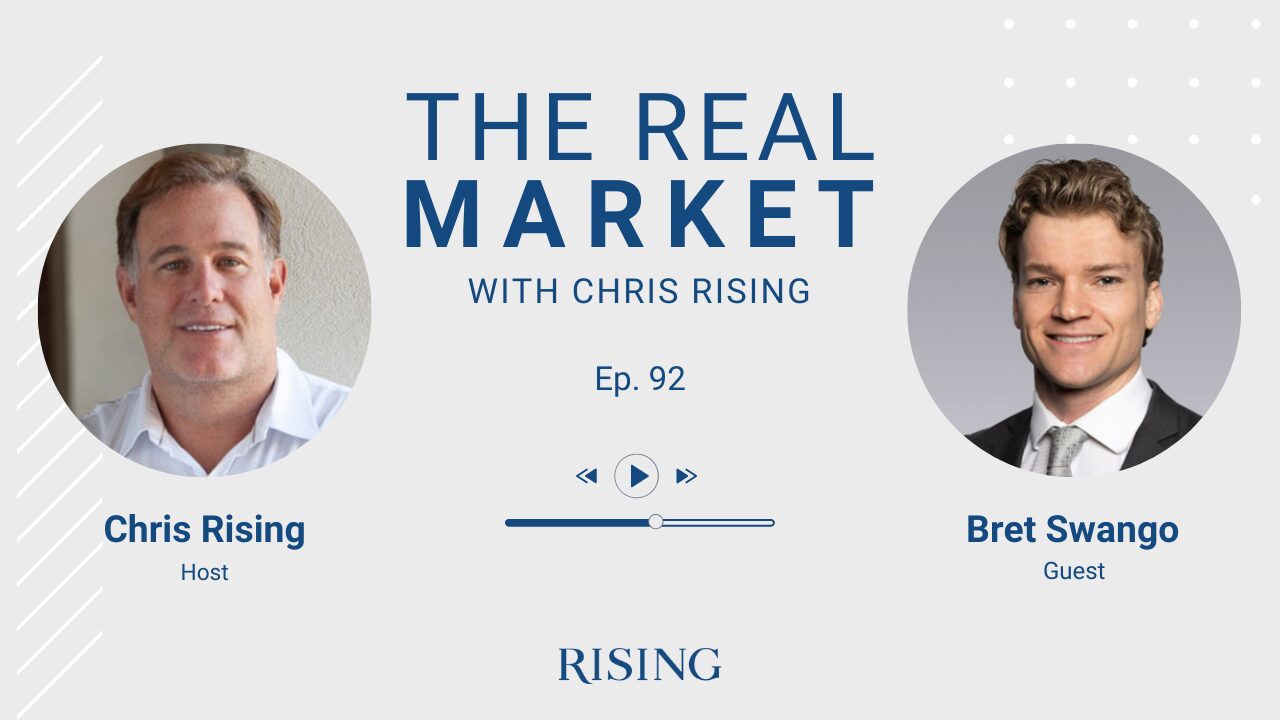
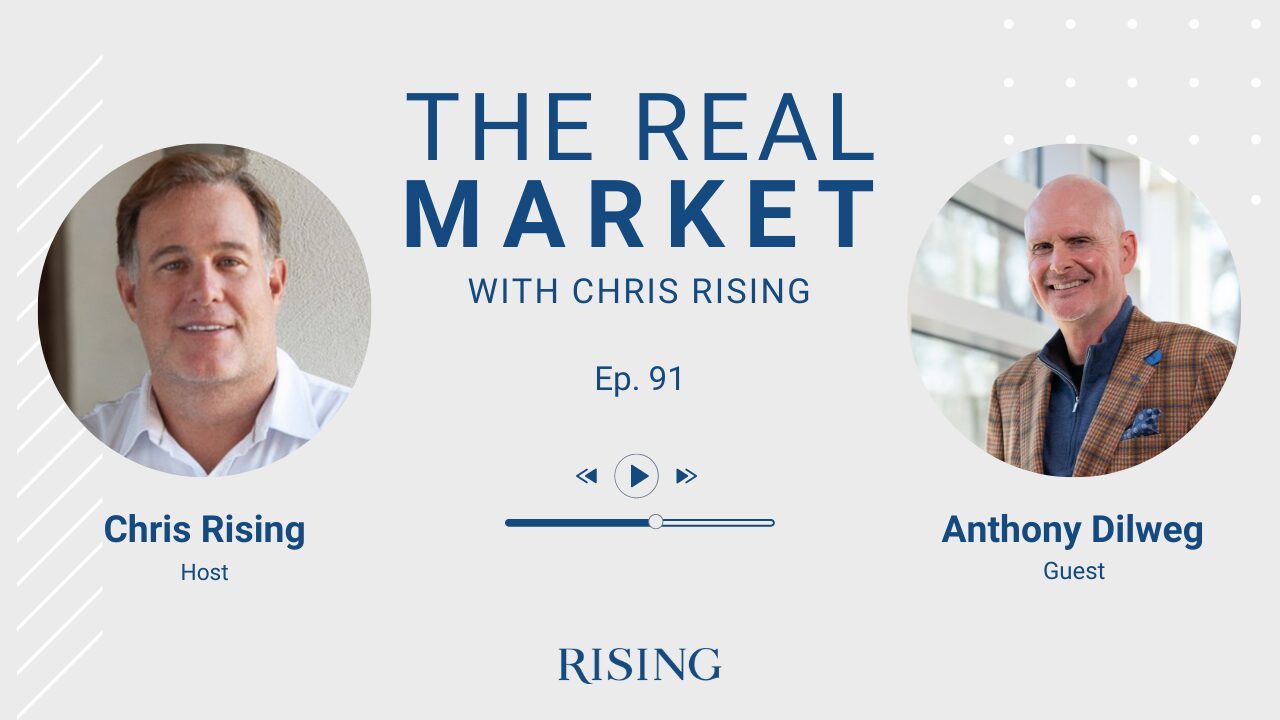
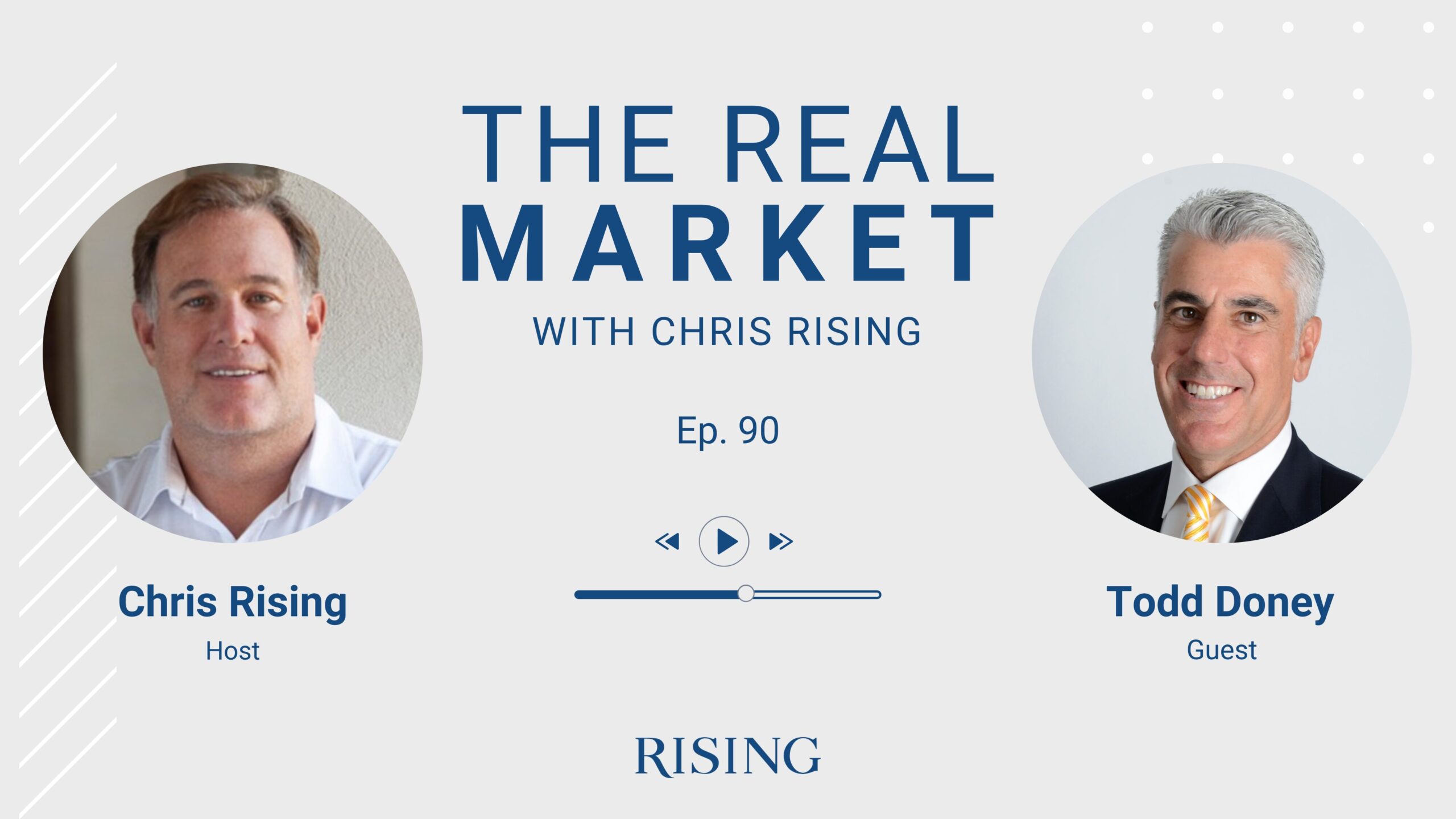
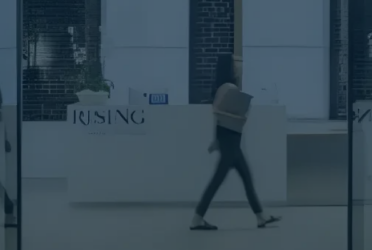
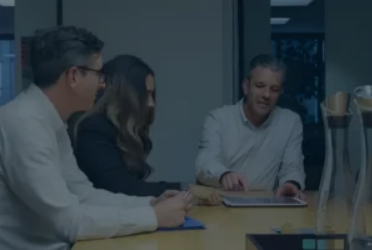
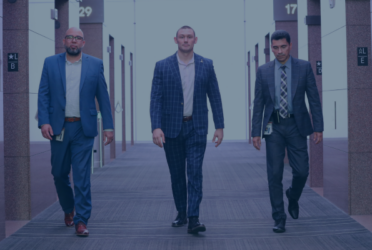
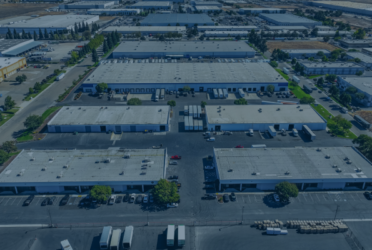
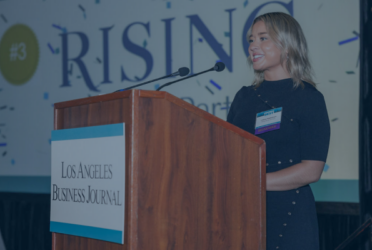
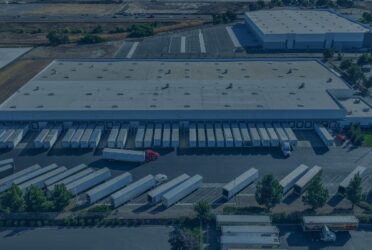
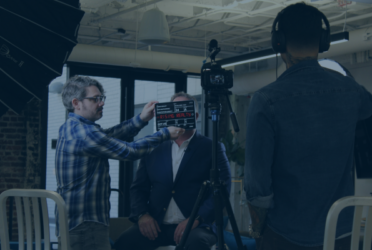
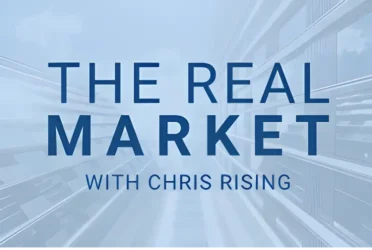 Podcast
Podcast